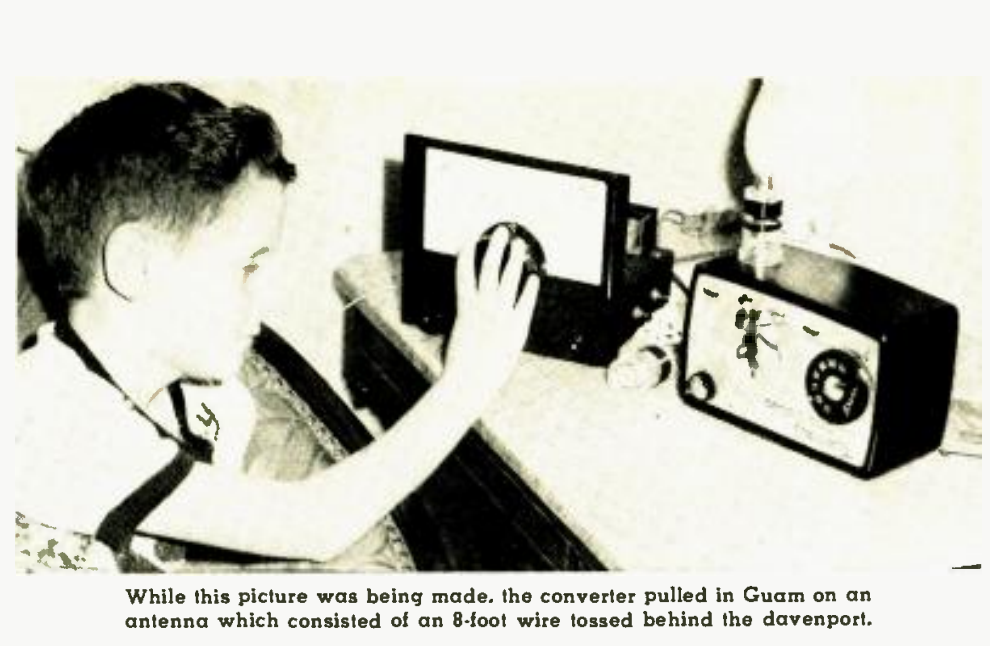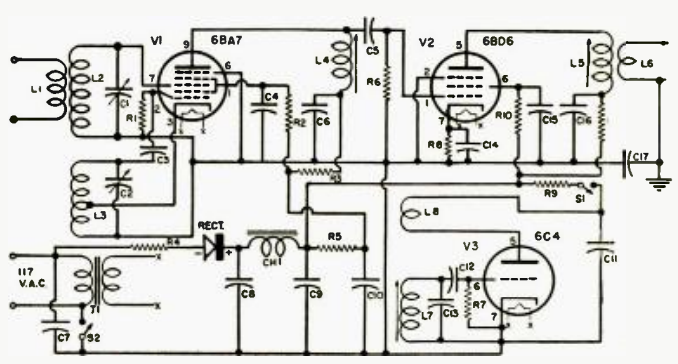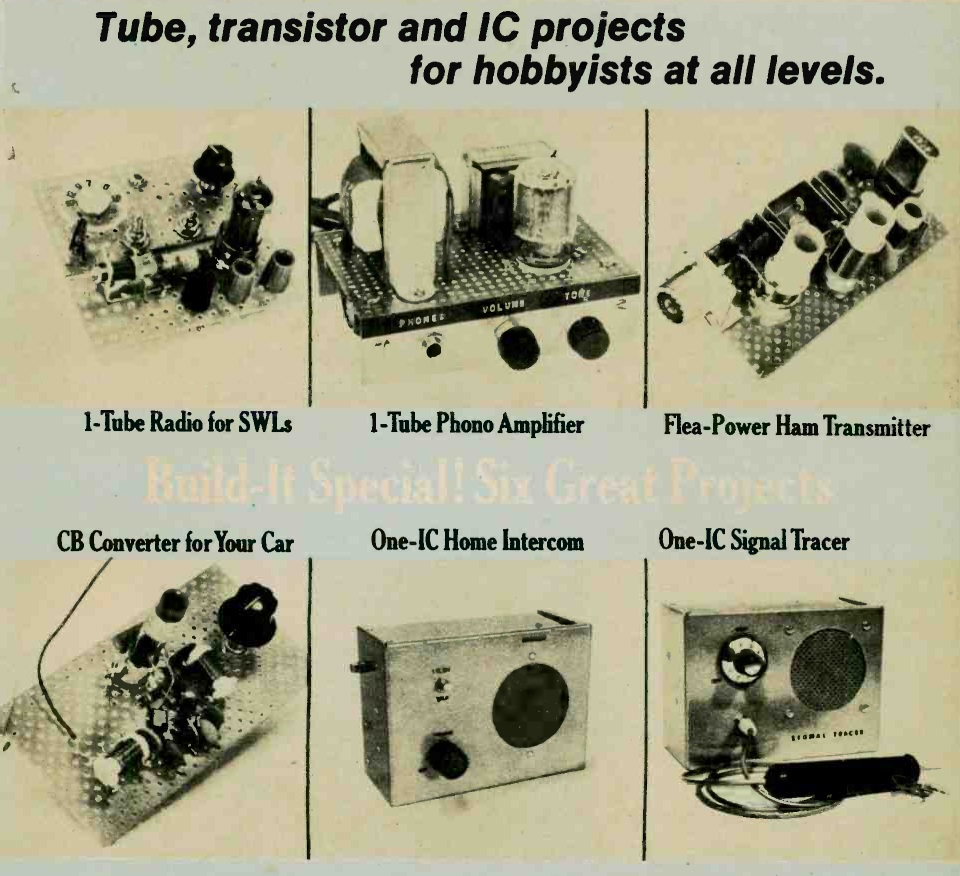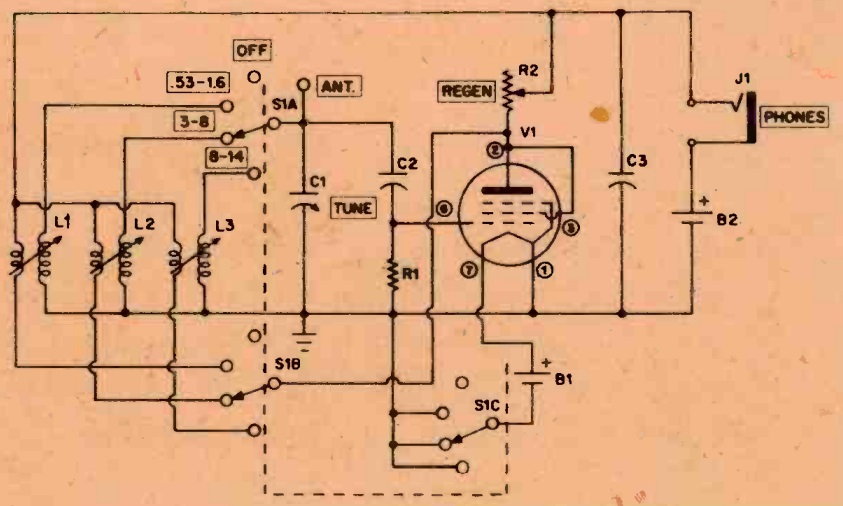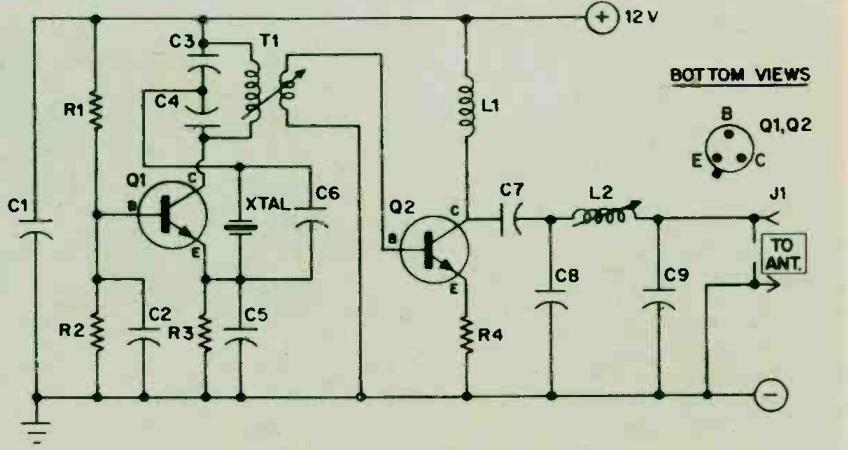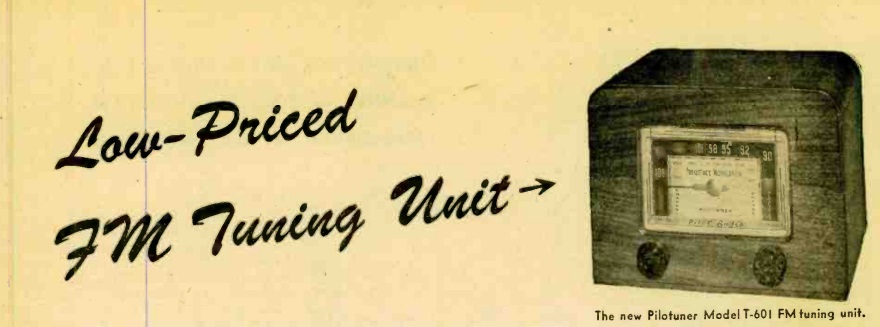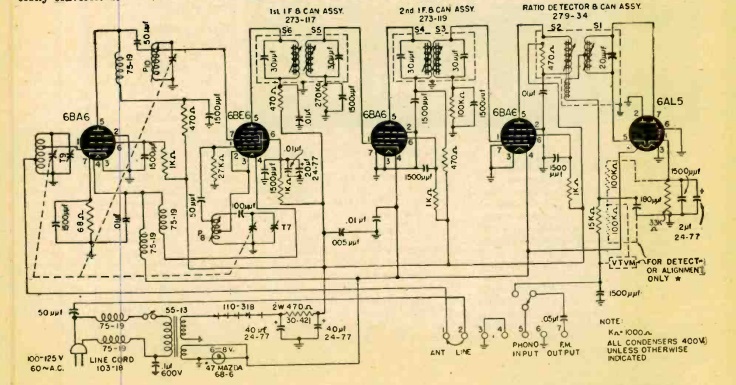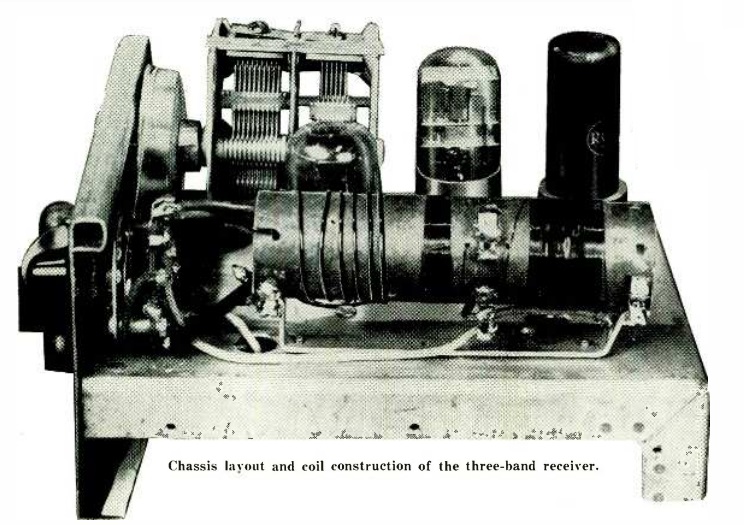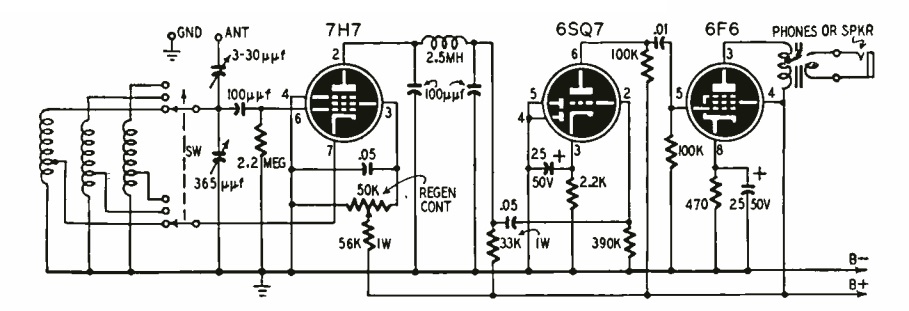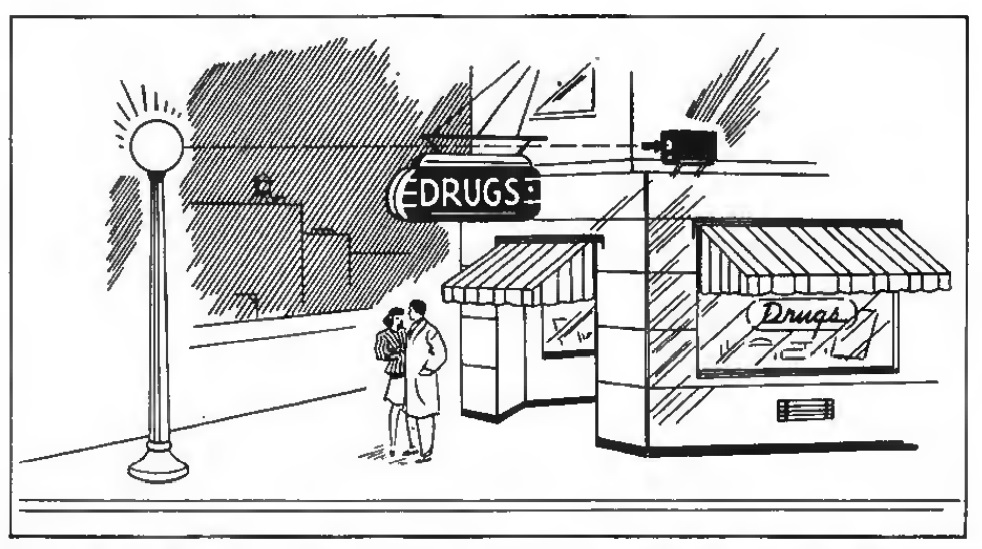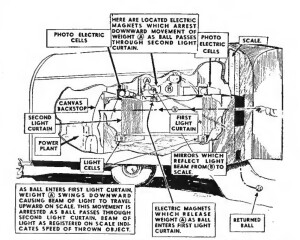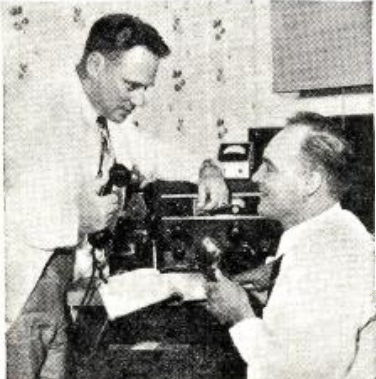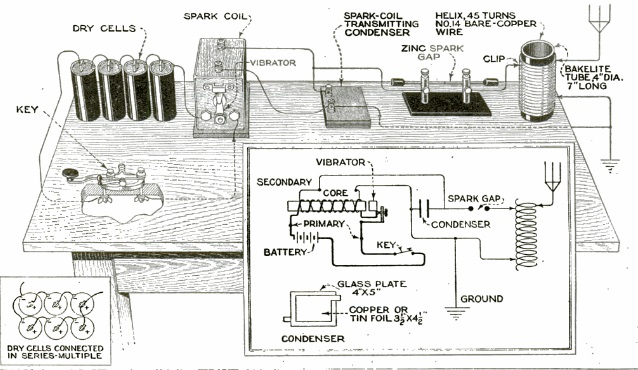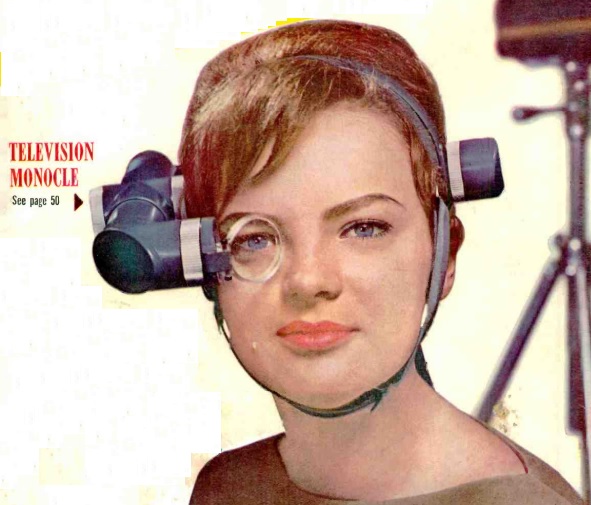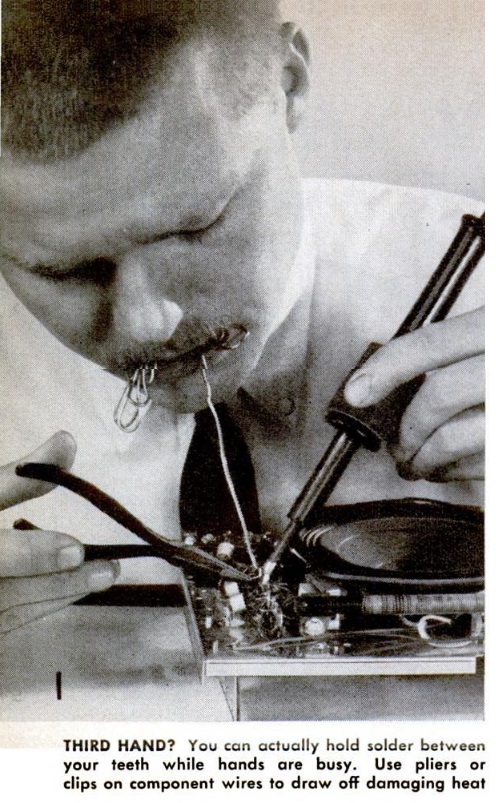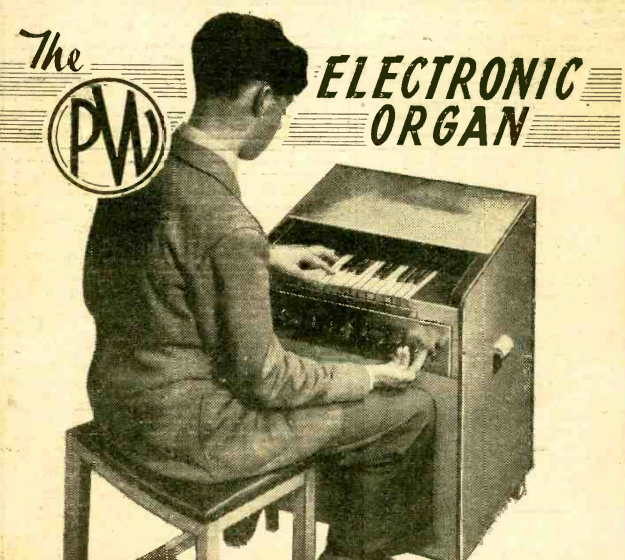 This maestro is playing a tune thanks to the electronic organ described in the September 1952 issue of the British journal Practical Wireless. It employed six tubes, including rectifier, and was suitable for either home or professional use. It could play only a single note at a time, and the player here is playing the tune with his left hand. It had, however, a number of effects such as vibrato, and he is controlling them with switches on the right hand. The keyboard covered two octaves, but since a switch shifted the range, the instrument was capable of four octaves.
This maestro is playing a tune thanks to the electronic organ described in the September 1952 issue of the British journal Practical Wireless. It employed six tubes, including rectifier, and was suitable for either home or professional use. It could play only a single note at a time, and the player here is playing the tune with his left hand. It had, however, a number of effects such as vibrato, and he is controlling them with switches on the right hand. The keyboard covered two octaves, but since a switch shifted the range, the instrument was capable of four octaves.
The difficult part was obtaining a keyboard. The magazine noted that some builders might be lucky enough to find a discarded accordion and use its keyboard. But for those not so lucky, the magazine included construction details for making your own.
While building one of these might be a fun project today, we have to admit that you can do a lot better just buying one. All of these have many more features at a much lower price. But none of them glow in the dark with six tubes:
Some links on this site are affiliate links, meaning that this site earns a small commission if you make a purchase after clicking the link.

